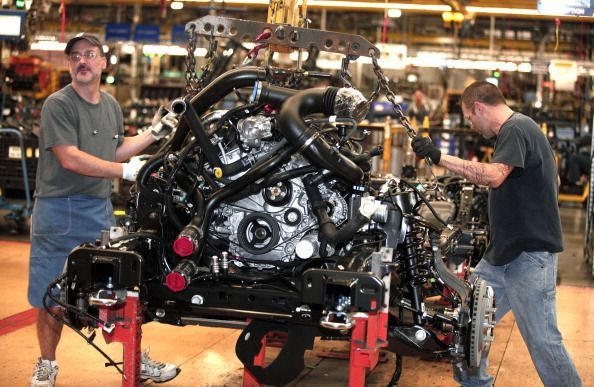U.S. Manufacturing Jobs Show Growing Signs Of Improvement As China's Role As The World's Labor Force Ebbs

China’s reign as workshop for the world is waning, and many American companies are starting to bring factories back to the U.S. due to China’s rapid wage increases in recent years.
The shift is a reflection of China’s ebbing competitive edge as a low-cost manufacturing center, the Financial Times reported on Tuesday. Recent examples of companies that are shifting back stateside include K’Nex, a toy maker, Trellis Earth Products, which makes bioplastic goods such as bags and utensils, and Handful, a bra manufacturer.
The new survey, conducted by the Boston Consulting Group, found that 21 percent of the 200 executives of large manufacturers surveyed were either already relocating, or planned to do so in the next two years. Another 33 percent said they were considering the option, or would do so in the future.
A similar survey in early 2012 found only 10 percent of respondents moving production to the U.S., and another 27 percent considering or close to considering the move, far lower than this year’s survey results.
Executives cite rising labor costs as the most common factor determining location of operations. Chinese wages have risen by about 15 to 20 percent annually while the average hourly U.S. manufacturing wage has risen just 1.6 percent per year since 2011.
Thus far employment data in U.S. manufacturing has yet to show improvement from companies coming back, but Hal Sirkin from BCG expects the effect of "reshoring" to begin to appear in the data over the next few years.
“These are leading indicators,” Sirkin said. “If you are going to have a plant up and running in 2015, you have to start planning in 2011, or 2012 at the latest.”
By BCG's estimate, reshoring and rising exports could add 600,000 to 1.2 million new jobs in the U.S. by the end of this decade, but the effect will vary across industries, the Financial Times reported. Sectors with relatively lower labor costs and relatively higher transport costs have reason to be close to their customers. Industries with high energy costs are also likely to do well as a result of the U.S. shale boom.
© Copyright IBTimes 2024. All rights reserved.





















